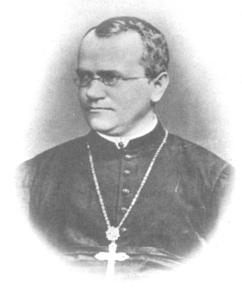 |
 |
 |
 |
 |
 |
 |
 |
|
 |
 |
 |
05 Evolutionary mechanisms
|
| Menu | back |
The familiar evolutionary mechanisms of mutation (spasmodic alterations of the genotype), selection, gene transfer, combination of gene sections, gene duplication and other factors, do not suffice to explain the emergence of new blueprints and functions (macro evolution). These mechanisms are, practically without exception, ineffective or harmful, hardly ever useful and often fatal. In addition, there is the fact that, according to rough estimates by John Haldane, even one million years of constant development time would not be enough to produce a biodiversity such as we see today.
The mathematician, Lee Spetner, was able to demonstrate that the familiar and observed beneficial mutations (i.e., bacteria which build up resistance) always lead to a loss of information in the genome (1). In addition, Ronald Aylmer Sir Fisher has demonstrated that each individual mutation, even a beneficial one, can quickly be eradicated again by random effects (2). An individual mutation has a very slim chance of survival and would need about twelve million years to be integrated into the genome (3). The key question of causal research for evolutionary change remains, therefore, unanswered.
|
 |
Darwin still believed in Jean Baptiste Lamarcks principle, according to which acquired traits are inheritable. However, as early as 1866 the Augustinian monk Gregor Mendel published a study in which he was able to prove that no new information comes into existence in the genome through inheritance but rather that information already in existence is merely newly combined (recombination). Today, Mendels laws are undisputed.
Gregor Mendel:
In 1856 Mendel began different crossing experiments with peas. He looked at characteristics of pea seeds and plants, which were clearly distinguished. For example, red or white flowering varieties, those with yellow or green seeds, etc. He crossed them by bringing the pollen from one variety on the stigma of another variety. With this already well-known technique, he made large test series. From 355 artificial fertilizations he grew 12'980 hybrids. By this he gained reliable insights about the splitting of characteristics according to fixed rules. |
| |
| |
|
7 by Mendel studied traits in peas. |
Haldanes Dilemma (4):
In the middle of the twentieth century, the famous evolutionist John Haldane attempted to employ so-called substitution load calculations. In doing so, he assumed that, through substitutions actual new basic types could come into existence. Then he attempted to calculate how much time that would take. He came to the result that even the most conservative estimates of one million years of constant development time would be nowhere near enough (5) (6).
However, one must bear in mind that the mathematical modelling of such population-genetic processes is extremely complex. Today, research is concentrating primarily on assessing the number of beneficial mutations that are actually identifiable. For more extensive calculations, important basic information is lacking to date.
Spetners approach:
Mathematician Lee Spetner calculated the probability that a new basic type could come into existence as a result of random events in the course of macro evolution (7). On the basis of information from the established specialist literature, he came up with the inconceivable ratio of 1:3.6 x 102738. In comparison, it is estimated, that our universe contains approximately 1080 atoms. Thus, one would have to attach 2,600 noughts to the number of atoms in the universe in order to describe the probability ratio estimated by Spetner. Mathematician Emile Borel said that even at a probability of 1:1050, the event would be impossible..
Spetner is not alone in his ideas. Other scientists have obtained similar results (8). However, one has to be aware that, in this area of research, one is working with uncertain framework conditions and/or that due to the complexity of life, these are scarcely comprehensible. Such approaches can, however, give us an idea of the dimensions of the challenge.
These 06 | Menu |
| back |
(1) Lee Spetner, Not by Chance!, The Judaica Press, 1997, page 20.
(2) R.A. Fisher, The Genetical Theory of Natural Selection, Oxford, 1958.
(3) J.C. Sanford, Genetic Entropy & the Mystery of the Genome, Elim Publishing, 2005, page 126.
(4) John B.S. Haldane, The cost of natural selection, Journal of Genetics 55, 1957, pages. 511524.
(5) Don Batten, Haldane´s Dilemma has not been solved, Technical Journal 19/1, 2005, pages 2021.
(6) G.C. Williams, Natural Selection: Domains, Levels and Challenges, New York: Oxford University Press, 1992, pages 143144.
(7) Lee Spetner, Not by Chance!, The Judaica Press, 1997, pages 94131.
(8) G.L. Stebbins Processes of Organic Evolution, Englewood Cliffs: Prentice-Hall, 1966.
|
(Image "Gregor Mendel") http://en.wikipedia.org/wiki/Gregor_Mendel
|
Comment this Site!
|
 |
 |
 |
 |
|

